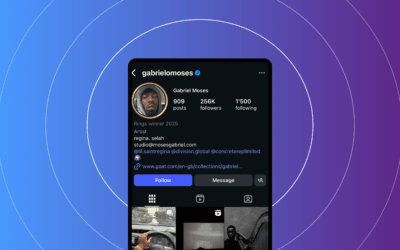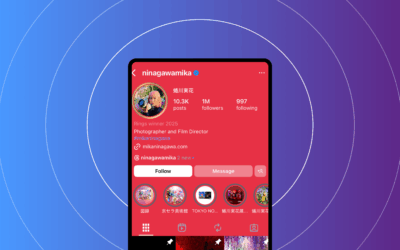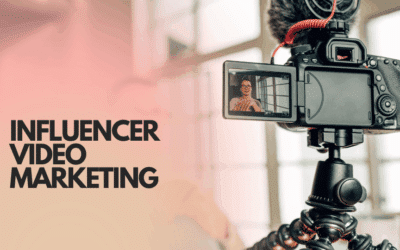Influencer Price List: What Brands Pay in 2025 & 2026
An influencer price list is the working set of fees and terms creators (or their agents) provide — the baseline for budgeting, negotiating, and forecasting influencer campaigns. For marketing leaders, it’s the fastest way to estimate the cost of influencer marketing and align your pricing model to specific KPIs. Price lists range from public rate cards to fully negotiated quotes. Reading them correctly helps you avoid overspend, mismatched usage rights, and weak performance.
This guide breaks down pricing drivers, common models, platform snapshots, negotiation scripts, and ready-to-use templates. You’ll leave with a calibrated view of typical ranges and a practical process for building a defensible campaign budget.
For broader context on influencer monetization and packaging, see how do influencers make money, what is a pr package, influencer media kit, what is whitelisting, and influencer marketing agreement template.
Quick read
- Pricing drivers: audience, engagement, platform, rights, and production value.
- Pricing models: per-post, bundles, retainers, and performance-based options.
- Tools: price-list templates and rate calculators help you benchmark and negotiate.
What is an influencer price list?
An influencer price list is a list or rate card that shows a creator’s standard fees and the terms that accompany them — e.g., price per post, price per story, usage rights, and exclusivity fees. Some creators publish static price lists; more often you’ll see a starting quote based on your brief, customized for deliverables, rights, and timing.
Where you’ll see price lists:
- Direct from creators (DM or email), often as a PDF/Deck/Notion page.
- Talent agencies representing multiple creators.
- Influencer marketplaces/platforms that standardize “price per post.”
- PR/marketing agencies packaging creators into a campaign.
When requesting a price list, ask for specifics that map to your KPIs. A tight brief yields cleaner comparisons and fewer surprises.
Request checklist
- Deliverables: number and type (e.g., 1 Reel + 3 Stories), content specs.
- Platforms: where it will be posted; cross-posting policy.
- Usage: organic use, paid usage, channels, geos, duration.
- Exclusivity: category and timeframe.
- Audience insights: demographics, top markets, last 90-day engagement metrics.
- Payment terms: deposits, net terms, revision policy, cancellation.
Template request script
“Please share your current price list (price per post / price per story / usage rights / exclusivity fee), plus audience demographics and last-90-day engagement metrics.”
Source: Influencer Marketing Hub benchmark report; HypeAuditor engagement benchmarks (accessed Sep 2025).
Sources: Influencer Marketing Hub — Influencer Marketing Benchmark Report
influencermarketinghub.com (accessed September 2025);
HypeAuditor — engagement benchmarks hypeauditor.com/blog (accessed September 2025).
Key factors that drive influencer pricing
Fees on a price list come from a consistent set of variables. Knowing them helps you interpret any rate card.
- Audience size (followers)
Definition: size of the creator’s audience by platform. Tiers: nano (1K–10K), micro (10K–100K), mid-tier (100K–500K), macro (500K–1M), mega (>1M).
Guidance: Start with follower tier, but engagement and niche fit often beat raw size. - Engagement rate
Definition: (likes + comments + saves) / followers × 100. Videos may include views or shares.
Guidance: Strong engagement supports higher fees; compare to category norms. - Platform differences
Definition: Formats drive effort and impact — posts, carousels, Reels, Shorts, long YouTube, LinkedIn articles.
Guidance: Expect platform-specific rates; YouTube generally commands higher due to production and persistence. - Content complexity and production value
Definition: Scripting, multi-location shoots, pro editing, animations.
Guidance: 10–100% uplift for higher creative complexity. - Usage rights & licensing
Definition: Reuse beyond the post — organic, paid, whitelisting, cutdowns.
Guidance: Short-term reuse adds 20–50%; long-term or perpetual usage adds more. - Exclusivity fees
Definition: No endorsements for competitors for a period.
Guidance: Expect 5–50% uplift depending on category and creator stature. - Regional and audience targeting
Definition: Markets with higher GDP or buying power command higher prices.
Guidance: Budget reflects revenue potential in top markets. - Campaign complexity, timelines, and deliverable count
Definition: One-off vs flights, tight turnarounds, revisions.
Guidance: Bundling lowers per-deliverable cost; rush fees add 10–25%. - Creator reputation and niche demand
Definition: Subject-matter experts with trust may command premiums for performance.
Sources: Industry benchmarks from Influencer Marketing Hub; engagement insights from HypeAuditor. Source: Influencer Marketing Hub benchmark report; HypeAuditor blog (accessed Sep 2025).
Quick tip: Ask for last-90-day median performance by format (e.g., Reel views) rather than lifetime metrics. Recency matters.
Source: Influencer Marketing Hub; HypeAuditor (accessed Sep 2025).
Influencer pricing models and typical ranges
Brands see several common pricing models on rate cards. All numbers below are US-centric estimates; real costs vary by niche, region, engagement, and contract terms.
Per-post / per-image (one-off)
What it is: A single published post with caption and one tag/link.
Levers: Bundle multiple posts; add stories; clarify usage rights; ensure timely reporting.
Indicative range (US, 2025):
- Nano: $50–$250
- Micro: $250–$1,000
- Mid-tier: $1,000–$5,000
- Macro: $5,000–$20,000+
- Mega: $20,000–$100,000+
Source: See Influencer Marketing Hub and related pricing roundups.
Per-story / per-snap
What it is: Short-lived content, often sold in bundles of 3–5 frames.
Indicative range (US, estimate):
- Nano: $20–$150
- Micro: $150–$800
- Mid-tier: $800–$3,000
- Macro+: $3,000+
Source: Influencer marketing strategy references (2025).
Per-video / long-form (YouTube, long IG video)
What it is: A produced video including scripting, editing, thumbnail, and disclosure.
Indicative range (YouTube, US):
- Micro: $500–$5,000
- Mid-tier: $5,000–$20,000
- Macro+: $20,000–$200,000+ (production-dependent)
Short-form video / Reels (TikTok, Instagram)
What it is: 15–60 seconds, high engagement; trend-aligned assets.
Indicative range (US):
- Micro: $250–$2,000
- Mid-tier: $2,000–$10,000
- Macro+: $10,000+
Bundled packages & multi-post campaigns
Discounted per-deliverable pricing for volume (e.g., 3 posts + 6 stories over 60 days).
Monthly retainers / ongoing partnerships
Fixed monthly fee for a set number of posts and activations; good for brand affinity and consistency.
Performance-based models (CPA / affiliate / rev share)
Lower base fee with incentives tied to tracked conversions. Require UTM standards and clear attribution windows.
Licensing / usage-based pricing (paid media rights)
Fees for reusing creator content off their channel — paid media, whitelisting, website use, retail media.
Source notes: Expert insight and benchmarking from Traackr, CreatorIQ, Fohr, and Mediakix (accessed Sep 2025).
Table A — Pricing by tier and platform (US estimates) appears below.
Table A is provided to help you compare typical ranges by tier and platform at a glance. Ranges are illustrative; adjust for niche, engagement, rights, and region.
Table A — Pricing by tier and platform (US estimates)
|
Tier |
Followers |
Platform |
Deliverables |
Typical Range (USD) |
Source/Notes |
|
Nano |
1K–10K |
|
1 Reel |
$150–$1,000 |
Higher with engagement |
|
Nano |
1K–10K |
|
1 Story (3 frames) |
$50–$250 |
Often bundled |
|
Micro |
10K–100K |
TikTok |
1 short-form video |
$250–$2,000 |
Trend fit matters |
|
Micro |
10K–100K |
YouTube |
60–120s integration |
$500–$5,000 |
Production-dependent |
|
Mid-tier |
100K–500K |
|
1 Reel + 3 Stories |
$3,000–$12,000 |
Package discount common |
|
Mid-tier |
100K–500K |
YouTube |
Dedicated video |
$5,000–$20,000 |
Higher retention = higher fee |
|
Macro |
500K–1M |
TikTok |
1 video |
$10,000–$40,000 |
Virality premium possible |
|
Macro |
500K–1M |
YouTube |
Dedicated video |
$20,000–$200,000+ |
Category premium applies |
|
Mega |
1M+ |
Multi-platform |
Launch package |
$50,000–$500,000+ |
Complex rights/production |
Table B — Usage rights & licensing impact on price
Table B shows uplifts by usage type when reusing creator content.
|
Usage Type |
Typical Uplift vs Base Rate |
Example Clause Language |
When to Use |
|
Organic repost (brand social) |
+20–40% (6 months) |
“Brand may repost on owned social channels for six months in [markets]. No paid media.” |
Social amplification without ads |
|
Paid social (Spark/whitelist) |
+50–150% (6–12 months) |
“Paid social usage for [channels] in [markets] for [duration].” |
Performance ads with creator face |
|
Web/ecomm/CRM |
+25–75% (6–12 months) |
“Web/ecomm/CRM use; [duration].” |
PDPs, email, landing pages |
|
Retail media/OOH |
+75–200% (6–12 months) |
“Retail media and OOH; talent consent required; [duration/markets].” |
In-store, retail ads, billboards |
|
Perpetual paid-media |
+100–300% |
“Perpetual paid-media use across channels and markets.” |
Rare; typically avoid unless essential |
Source: What is whitelisting; influencer pricing guides (accessed Sep 2025).
Platform-specific snapshots
Platform and format shape pricing. Here are quick, actionable snapshots across the major channels.
- Formats: feed image, carousel, Reel, stories, live.
- Pricing notes: Reels and carousels often command premiums; stories are bundled (3–5 frames).
- Rights add-ons: whitelisting or partnership label access increases cost.
Source: Influencer Marketing Platform overview and platform guidance (accessed Sep 2025).
YouTube
- Formats: dedicated video, mid-roll integrations, Shorts.
- Notes: Production and long-term discovery drive higher fees; clear revision caps and thumbnail rights are common.
Source: How Do Influencers Make Money; YouTube pricing references (accessed Sep 2025).
TikTok
- Formats: short-form video; live shopping; Spark Ads-ready assets.
- Notes: Trend-driven creativity and velocity can carry premiums; proven commerce creators charge more.
Source: What is a Micro Influencer; TikTok pricing guidance (accessed Sep 2025).
LinkedIn / X (Twitter)
- Formats: thought-leadership posts, carousels, long-form articles.
- Notes: B2B nuance and lead potential push LinkedIn rates higher; packages often include content development and moderation.
Twitch / streaming
- Formats: on-stream integrations, product placement, affiliate links.
- Notes: Contracts often specify read timing and incentives; longer streams can increase value.
Source: Twitch guidance and streaming pricing studies (accessed Sep 2025).
Quick tip: Use platform-native KPIs to benchmark—for example, Reels views on Instagram, watch time on YouTube, or lead volume on LinkedIn.
Sources: GRIN operational guidance; Klear state-of-influencer marketing reports (accessed Sep 2025).
How to read and compare influencer price lists effectively
Parsing terms is as important as the headline price. Use this practical reading checklist.
Reading checklist
- Deliverables: list every item and specs (format, length, resolution, caption length, link placement).
- Posting windows: publish ranges, times, and content expiration (if any).
- Platforms included: primary post + cross-posts; reposts included and how many.
- Usage & licensing: scope, geographies, channels, duration.
- Exclusivity: define category, territory, duration, and scope.
- Revisions: number included and turnaround times.
- Metrics & reporting: which metrics, format, and timing of reports.
- Payment terms: deposits, net terms, invoicing rules, late fees.
- Cancellations / force majeure / makegoods: remedies if live post issues arise.
Red flags
- No clear usage rights language.
- “Unlimited” rights bundled into a small fee.
- No audience metrics or unverifiable data.
- No deliverables timeline.
- Vague reporting promises without specifics.
Negotiation scripts
- Volume discount: “If we commit to X posts over Y months, what is your bundled rate?”
- Usage rights: “We’d like paid social usage for 6 months in the US — what uplift would you apply?”
- Performance split: “We can offer a reduced flat fee plus a CPA for verified conversions — is that acceptable?”
Helpful context on pricing mechanics and negotiation tactics: Mediakix pricing guide; Fohr pricing guide (accessed Sep 2025).
Budgeting and negotiation strategies for marketing leaders
Translate campaign goals into a defensible influencer budget and negotiation posture.
Step-by-step budgeting
- Set the objective and KPI (awareness, consideration, acquisition).
- Convert KPI to a target cost metric (e.g., target CPM or CPA).
- Map deliverables to KPIs by format and platform.
- Build a price-list-based budget from 10–20 rate cards and model scenarios (core, stretch, conservative).
- Add a contingency (10–20%) for production, rights, and rush fees.
- Decide on the payment mix (base vs performance incentives).
Negotiation best practices
- Anchor with data: “Based on recent benchmarks for creators of this size, our target is $X per Reel.”
- Stage payments: 50% on acceptance, 50% on delivery and metrics.
- Protect usage: “This fee covers organic posts only; paid-media reuse will be negotiated separately.”
- Ask for makegoods: pre-agree thresholds for major under-delivery.
For enterprise benchmarking, see Traackr resources (accessed Sep 2025).
Source: Traackr resources (accessed Sep 2025).
Case studies and practical examples
Example A — B2B SaaS 6-month program
- Goal: Generate MQLs with target CPL of $200.
- Strategy: 8 LinkedIn thought-leadership posts; 12 micro-influencer product demos; 3 macro YouTube interviews.
- Cost (illustrative): LinkedIn mid-tier posts x8 = $12,000; 12 micro demos @ $800 = $9,600; 3 macro YouTube @ $15,000 = $45,000; contingency = $8,000; Total ≈ $74,600.
- Outcome model: Impressions 1.8M; CTR 0.9%–1.5%; leads ≈ 1,944; blended CPL ≈ $38 (model only).
Lessons: Pre-approved messaging, UTMs, and testing multiple angles reduce variance.
Example B — Consumer product launch
- Goal: Spike awareness and direct sales over 2 weeks.
- Mix: 20 micro-influencers for Reels; 5 macro creators; paid social for top performers.
- Cost: 20 micro Reels @ $1,000 = $20,000; 5 macro packages @ $12,000 = $60,000; paid social = $10,000; Total ≈ $90,000.
- ROI thinking: 2.5M views; 1.5% CTR; 3% conversion; AOV $60 → revenue ≈ $67,500 (model). Use incrementality testing for accuracy.
Tip: Pull creator medians from last 90 days and model best/mid/worst case scenarios before launch.
Source: Case study benchmarks and price references (accessed Sep 2025).
Best practices for contracts, usage rights, and renewals
Contracts turn a rate card into an enforceable campaign. Include these clauses to avoid disputes later.
Clause templates
- Deliverables: “Creator will deliver X published posts by Y date(s). Specs: [format, resolution, aspect ratio, caption/link requirements].”
- Usage/License: “Brand is granted a non-exclusive license to use Content for [channels], for [duration] in [geographies]. Paid media reuse requires separate consent and fee.”
- Exclusivity: “Creator shall not promote competing products in [category] for [X months] within [geography].”
- Payment & invoicing: “50% deposit; balance within 30 days after approvals; late fee X%.”
- Makegood & cancellation: “If a post does not go live due to creator error, a makegood post will be delivered within 14 days at no extra cost.”
- Reporting & verification: “Post metrics within 7 days; access to insights on request.”
- FTC & disclosure: “FTC endorsement guidelines followed; paid promotions disclosed (#ad, #sponsored).”
For disclosure requirements, see FTC Endorsement Guides (accessed Sep 2025).
Tools, templates, and resources
Downloads and templates to help you execute faster and with stronger data.
Download price-list template (Google Sheets)
Open rate calculator (Sheets/Excel)
Benchmark links and references
- What is micro influencer page: what is a micro influencer
- What is a PR package: what is a pr package
- Influencer media kit guide: influencer media kit
- What is whitelisting: what is whitelisting
- Influencer marketing agreement template: influencer marketing agreement template
- How do influencers make money: how do influencers make money
- Influencer marketing strategies 2025: influencer marketing strategies
- What is a micro influencer: what is a micro influencer
- How to find influencers for your brand: how to find influencers for your brand
- Whitelisting guide for content teams: what is whitelisting
For additional benchmark reading, see AspireIQ pricing guidance; Mediakix pricing guide; Fohr pricing guide (all accessed Sep 2025).
Sources: AspireIQ pricing guide; Mediakix pricing guide; Fohr pricing guide (accessed Sep 2025).
Frequently Asked Questions (PAA-ready)
Q: What is an influencer price list and why does it matter for brands?
A: It’s a creator’s rate card showing standard fees and rights. It anchors costs to concrete deliverables, helping brands compare apples-to-apples and plan budgets accurately.
Q: How are influencer prices determined in 2025?
A: Prices depend on audience tier, engagement, platform, production complexity, and licensing. The model chosen (per post, bundle, retainer, or performance) plus usage and exclusivity drives the final fee.
Q: What’s the difference between price per post and price per story?
A: Price per post covers a permanent feed post with longer shelf life; price per story covers short-lived content, often sold in bundles. Include reporting and click/link requirements in both.
Q: Do influencers charge for usage rights, and how much do rights fees typically cost?
A: Yes. Usage rights add uplift for content reuse beyond the original post — organic, paid, whitelisting, or perpetual use. Typical uplifts vary by duration and channel, as outlined in price lists.
Q: How much do micro-influencers charge compared to macro-influencers?
A: Micro often charges in the hundreds to low thousands per post; macro creators can command thousands to tens of thousands. Always adjust for engagement, niche, and rights in the influencer price list.
Q: What platform typically has the highest influencer rates, and why?
A: YouTube often commands the highest due to production and long-term discovery; Instagram Reels and carousels are premium for certain formats, while TikTok can spike for viral creators.
Q: How should I read and compare influencer price lists from agencies or creators?
A: Standardize deliverables, rights, and timelines. Convert costs to per-deliverable terms and record rights uplifts to reflect true all-in costs.
Q: Are there typical discounts for long-term partnerships or multi-campaign deals?
A: Yes. Bundles or retainers often unlock 10–30% savings when calendars and payments are predictable.
Q: What data should I request when evaluating an influencer’s price list?
A: Request last-90-day impressions, reach, format-specific engagement, audience demographics, and proof of conversions if available. This supports accurate budgeting and validation.
Conclusion & next steps
You now have a current influencer price list view: what drives fees, how to choose an influencer pricing model, and what to pay by platform and tier. Remember four principles:
- Rights matter: define usage rights and exclusivity in writing.
- Benchmark properly: compare by platform, format, and engagement, not followers alone.
- Tie to KPIs: translate rates into CPM/CPA targets before you commit.
- Contract clearly: lock deliverables, timelines, reporting, and makegoods.
Next steps:
- Download the price-list template (Google Sheets).
- Open the rate calculator (Sheets/Excel).
- Talk to our team for a tailored influencer price list and benchmarking review.
References
- Influencer Marketing Hub — Influencer Marketing Benchmark Report: influencermarketinghub.com (accessed September 2025)
- Influencer Marketing Hub — How much do influencers charge?: influencermarketinghub.com (accessed September 2025)
- CreatorIQ — Resources and benchmark insights: creatoriQ.com (accessed September 2025)
- CreatorIQ — Benchmark report: creatorIQ.com (accessed September 2025)
- HypeAuditor — Blog and engagement studies: hypeauditor.com (accessed September 2025)
- GRIN — Blog and ROI guidance: grin.co (accessed September 2025)
- Traackr — Resources: traackr.com (accessed September 2025)
- Federal Trade Commission — Endorsement Guides: ftc.gov (accessed September 2025)
- Fohr — The Influencer Pricing Guide: fohr.co (accessed September 2025)
- Mediakix — Influencer pricing: mediakix.com (accessed September 2025)
- AspireIQ — Influencer pricing guide: aspireiq.com (accessed September 2025)
- Klear — State of Influencer Marketing: klear.com (accessed September 2025)
- eMarketer — Industry spend context: emarketer.com (accessed September 2025)
- Statista — Market size & spend: statista.com (accessed September 2025)
Other articles for deeper context:
Influencer Marketing Platform,
What is a micro influencer,
What is a pr package,
Influencer media kit,
What is whitelisting,
Influencer marketing agreement template,
How do influencers make money,
Influencer marketing strategies,
How to find influencers for your brand,
What is whitelisting.
Influencer Marketing Articles
Actionable tips to get more success with influencer marketing campaigns
Who is Gabriel Moses?
Discover Gabriel Moses, the London-born artist blending fashion, music, and heritage into striking visual narratives. From Dior to Johnnie Walker, see why he’s shaping culture.
Who is Mika Ninagawa?
Discover Mika Ninagawa, Tokyo’s visionary photographer and film director celebrated for her vivid art, bold storytelling, and win at Instagram Rings 2025.
Influencer Video Marketing
Influencer video marketing is the fastest way to earn trust, educate users, and speed up SaaS adoption. In 2025, short-form video dominates attention, and platform-native shopping helps creators convert viewers into customers.






